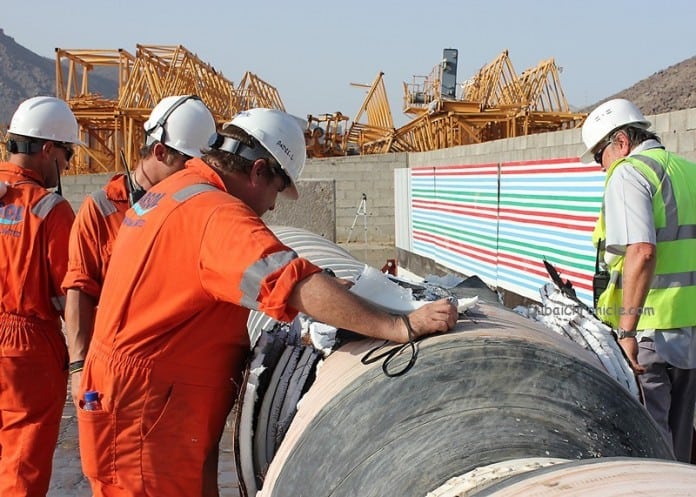
- The forecast for projects planned and underway in the GCC in 2015 is US$172 billion
- US$ 32 billion Al Maktoum International Airport expansion anticipated to be the biggest airport in the world
2015 stands to be another key indicator of economic development as the Gulf Cooperation Council (GCC) continues to invest in infrastructure and capital projects. The forecast for projects planned and underway in the GCC in 2015 is US$172 billion; the highest on record to date. This is according to Deloitte Middle East’s newly released annual report: “GCC Powers of Construction 2015: Construction – the economic barometer for the region”. Issued annually, the report serves as a comprehensive review of the construction industry for leaders.
It is based on data gathered from surveys and supported by interviews with some of the most prominent construction industry leaders from the region. In addition to articles and interviews examining key industry trends, the report includes a country by country analysis of statistics, and key projects.
The key drivers for diversification include job creation given that 50% of the GCC population is under the age of 25. In the Kingdom of Saudi Arabia (KSA) alone it is forecast that four million jobs will be needed in the next five years. GCC population growth is forecast to grow from 350 million to 602 million by 2050, all driving the GCC countries’ strategies to provide education, healthcare, infrastructure and support to communities. This growth will require energy and water: a 34% increase in electricity generation capacity and a further 2.2 billion liters desalination capacity are required by 2020.
“The forecast of US$172 billion worth of projects are against a backdrop of lower oil prices, continuing political unrest and reduced International Monetary Fund (IMF) growth forecasts across the GCC,” said Cynthia Corby, audit partner and leader of the Construction industry for the Middle East.
“However the GCC countries have the benefit of reserves, which they have built up as a buffer and which they can continue to use to achieve their outlined strategies. Therefore, they are expected to continue to spend on infrastructure and capital projects in order to achieve their strategies for diversification of their economies.” she added.
Highlights of the report include:
UAE
The dwarfing infrastructure project of the region is of course DWC: Al Maktoum International Airport expansion, currently budgeted at US$32 billion and anticipated to be the biggest airport in the world. This is followed by a massive industrial project in Abu Dhabi for Tacaamol – Al-Gharbia Chemicals Industrial City, planned at US$20 billion. There are other sectors with several billions being planned on capital projects, with the top sector for 2015 being mixed-use and residential projects amounting to US$24 billion.
Saudi Arabia
The largest project in pre-execution phase in KSA is Al Mozaini – Riyadh East Sub Center, for US$15 billion. The second largest project in pre-execution phase is Khozam Development in Jeddah for US$13.3 billion. This mixed-use development located in the south east of the center of Jeddah is expected to develop the area economically, culturally and socially. There are a number of other sectors with several billions being planned on capital projects, with the top sectors for 2015 represented by healthcare projects amounting to US$19 billion, infrastructure projects (roads and bridges) at US$35 billion, and power plants at US$13 billion. This is all much needed capital spend in KSA.
Qatar
In Qatar, the two largest projects in pre-execution phase and expected to be awarded in 2015 are from QRail, namely the “QIRP: Passenger & Freight Rail”, budgeted at US$15 billion, and from QIRP, whose “Passenger & Freight Rail: Phase 2” is budgeted at US$3 billion. This is followed by two projects, one for the new Qatar Economic Zone budgeted at US$3 billion, which is one of the three new planned economic zones mainly focusing on logistics and air freight companies (expected to be the biggest of the three), and Occidental Petroleum Corporation (Oxy) – Idd e Shargi North Dome Expansion Phase 5, again budgeted for US$3 billion. So in Qatar a clear focus on infrastructure continues as expected.
Rest of the GCC
Out of the total US$2.8 trillion projects which are in execution and pre execution phases, 40% of this value relates to residential, leisure and hospitality buildings and mixed-use developments, totaling an anticipated budget value of US$1.1 trillion. These projects are the most sensitive in terms of balancing supply and demand in each of the GCC countries, with timing of delivery balanced alongside a sensible return on investment likely impacting the awards of these projects specifically. GCC countries are hence expected to manage their economic growth and planned capital projects to create diversified economies with effective debt and capital funding in the coming years.
“What seems clear is that the necessity to move away from oil-based economies has never been greater and that in the race to diversify, there will be winners and runners-up. Quite how this will play out is too early to say, but the gap is likely to grow, providing a regional hotspot of investment and development,” concludes Andrew Jeffery, managing director, Capital Projects Advisory, Deloitte Middle East.




































